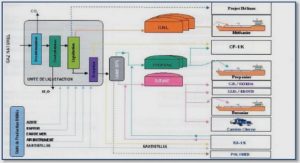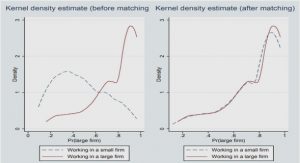Get Complete Project Material File(s) Now! »
Chapter 3: Project Management and Organisational Culture
Introduction
Project Management that is based on the PMBOK® (Project Management Body of Knowledge) framework values the execution of projects on brief, on budget, on time, and on the basis of healthy interrelationships between project team members. The PMBOK® framework (PMBOK® guide, 2004) is an American National Standard (ANSI/PMI 99-001-2004) and is widely used in project management in various industries world wide (Haugan, 2006) and in South Africa, including the pharmaceutical industry. In terms of the PMBOK® framework project time management includes the processes required to accomplish timely completion of a project. It involves the sequencing of activities, activity resource estimation, activity duration estimation, scheduling and control of these resources and schedules. The process treats time as a finite resource that expires linearly and which is sequenced in different ways, allocated to tasks and managed according to a predetermined schedule. Project staff members are assigned certain roles and responsibilities within these activities and their performance is measured according to the specific project’s performance evaluation framework. Project quality is controlled within certain specified tolerances and control limits on the critical parameters that are defined in the planning stages of the project. These parameters typically include, amongst others, project time and budget.
What is a project?
Organisations perform work to achieve a set of objectives. Work generally involves either operations or projects, although the two may overlap. Operations and projects share some characteristics, for example, they are:
performed by people
constrained by limited resources planned, executed and controlled Operations and projects differ primarily in that operations are ongoing and repetitive while projects are temporary and unique. The objectives of projects and operations are fundamentally different. The purpose of a project is to attain its objective and then terminate. Conversely, the objective of an ongoing operation is to sustain the business.
Projects are different because the project concludes when its specific objectives have been attained, while operations adopt a new set of objectives and the work continues.
Projects are undertaken at all levels of the organisation and they can involve a single person or many thousands. Their duration ranges from a few weeks to several years. Projects can involve one or many organisational units, such as joint ventures and partnerships.
Every project has a definite beginning and a definite end (PMBOK® guide, 2004). Projects are influenced by the maturity of the organisation with respect to project management, culture, style, and organisational structure.
Project Management
In addition to the information provided in the definitions of section 1.4, the following are relevant:
High quality projects deliver the required product, service or result within scope, on time, and within budget (PMBOK® guide, 2004). The relationship amongst these three factors is such that if any of these factors changes, at least one other factor is likely to be affected. Project managers also manage projects in response to uncertainty. Project risk is an uncertain event or condition that, if it occurs, has a positive or negative effect on at least one project objective. The project management team has a professional responsibility to its stakeholders including customers, the performing organisation, and the public. Many of the processes within project management are iterative because of the existence of, and necessity for, progressive elaboration in a project throughout the project’s life cycle. That is, as a project management team learns more about a project, the team can then manage to a greater level of detail.
The term project management is sometimes used to describe an organisational or managerial approach to the management of projects and some ongoing operations, which can be redefined as projects that is also referred to as “management by projects” (PMBOK® guide, 2004). An organisation that adopts this approach defines its activities as projects in a way that is consistent with the definition of a project. There has been a tendency in recent years to manage more activities in more application areas using project management. This is not to say that all operations or should be organised into projects. The adoption of “management by project” is also related to the adoption of an organisational culture that is close to a project management culture.
Project Management Culture
Projects are typically part of an organisation that is larger than the project. Even when the project is external, the project will still be influenced by the organisation or organisations that initiated it. The maturity of the organisation with respect to its project management system, culture, style, organisational structure and project management office can also influence the project, for example (Zwikael, Shimizu & Globerson, 2005), Israeli project managers are more focused on performing « Scope » and « Time » management processes, assisted by project management software, while formal « Communications » and « Cost » management are more frequently used by Japanese project managers. It was also found that Japanese organizations use clear and measurable success measures for each project, while project objectives in Israel are often quite foggy. Differences in efforts made by project managers and management are manifested by smaller costs and schedule overruns in Japanese organizations, while Israeli customers of local projects seem to obtain better technical performance at the end of the project. The Israeli customer, however, is much more impacted by superior technical performance and easily forgives cost and schedule overruns.
Muriithi and Crawford (2003) researched the applicability of project management approaches, as represented in the most widely distributed and accepted knowledge and practice guides (PMBOK ® guide, 2004 and Australian National Competency Standards for Project Management) to projects in developing and emerging economies. Focusing on East Africa, they identified that local realities such as the need to cope with political and community demands on project resources, recognition that economic rationality and efficiency, assumed as a basis for many project management tools and techniques does not reflect local realities; and that use of such tools and techniques will not enhance project success if they run counter to cultural and work values.
DECLARATION
ACKNOWLEDGEMENTS
ABSTRACT
TABLE OF CONTENTS
LIST OF TABLES
LIST OF FIGURES
CHAPTER 1: INTRODUCTION AND CONTEXTUALIZATION
1.1 INTRODUCTION .
1.2 PURPOSE OF THE RESEARCH
1.3 RESEARCH OBJECTIVES .
1.4 RESEARCH PROBLEM STATEMENT
1.5 DEFINITION OF KEY TERMS
1.6 ASSUMPTIONS OF THE STUDY
1.7 METHODOLOGY AND RESEARCH DESIGN
1.8 LIMITATIONS AND DELIMITATIONS OF THE STUDY
1.9 IMPORTANCE OF THE STUDY
1.10 OUTLINE OF RESEARCH REPORT
CHAPTER 2: TIME PERCEPTION AS A CULTURAL CONSTRUCT
2.1 CULTURAL PERCEPTION OF TIME AND POLYCHRONICITY
2.2 THE CHRONICITY CONTINUUM
2.3 THE ROLE OF NATIONAL, ORGANISATIONAL AND INDIVIDUAL CULTURE
2.4 CREATING MEANING OF POLYCHRONIC BEHAVIOUR IN THE WORKPLACE
2.5 INFLUENCE OF TIME ORIENTATION ON ORGANISATIONAL PERFORMANCE
2.6 INTERPLAY OF TIME ORIENTATION BETWEEN ORGANISATIONAL AND INDIVIDUAL LEVELS
2.7 POLYCHRONICITY AS A MULTI-DIMENSIONAL CONSTRUCT
2.8 TIME MANAGEMENT IN ORGANISATIONS
2.9 JOB FIT, OUTCOMES AND SATISFACTION AMIDST POLYCHRONICITY
2.10 MEASURING INSTRUMENTS FOR TEMPORAL ORIENTATION AND POLYCHRONICITY
2.11 CONCLUSION
CHAPTER 3: PROJECT MANAGEMENT AND ORGANISATIONAL CULTURE
3.1 INTRODUCTION
3.2 WHAT IS A PROJECT?
3.3 PROJECT MANAGEMENT
3.4 PROJECT MANAGEMENT CULTURE
3.5 EVALUATION OF PROJECT OUTCOMES
3.6 CONCLUSION
CHAPTER 4: THEORETICAL MODEL
4.1 INTRODUCTION
4.2 RESEARCH QUESTION AND PHENOMENON
4.3 PROPOSED THEORY OR MODEL
4.4 RESEARCH PROPOSITIONS.
CHAPTER 5: RESEARCH METHODOLOGY AND DESIGN
5.1 METHOD OF STUDY
5.2 TARGET POPULATION AND SAMPLING FRAME
5.3 DATA COLLECTION
5.4 ASSUMPTIONS
5.5 REASONS FOR THESE METHODS
5.6 PROPOSED RESEARCH INSTRUMENT
5.7 DEMOGRAPHIC DATA CAPTURE
5.8 OPERATIONALISATION OF RESEARCH CONCEPTS USED IN THIS STUDY
5.9 STATISTICAL METHODS EMPLOYED IN THIS STUDY
CHAPTER 6: DATA EXAMINATION, ANALYSIS AND TESTING
6.1 INTRODUCTION
6.2 CLEANING THE DATA SET
6.3 TESTING FOR NORMALITY OF FREQUENCY DISTRIBUTIONS
6.4 DISTRIBUTION PROFILE OF ITEM-LEVEL RESPONSES
6.5 TESTING FOR DIFFERENCE OF THE MEANS BETWEEN THE TWO CRA OPINION GROUPS
6.6 DISTINGUISHING BETWEEN THE GROUPS BASED ON DEMOGRAPHIC VARIABLES
6.7 CROSS TABULATION OF CONTRAST GROUPS FOR EACH OF THE THREE OPINION GROUPS
6.8 ANALYSIS OF THE GAPS BETWEEN OPINION GROUPS
6.9 TESTING FOR THE SIGNIFICANCE OF OPINION GROUP 3 GROUP RELATIONSHIPS
6.10 RELIABILITIES OF SCALE
6.11 INTERPRETATION OF STATISTICAL RESULTS
CHAPTER 7: DISCUSSION OF RESULTS, RECOMMENDATIONS AND CONCLUSIONS
7.1 INTRODUCTION
7.2 THE EXTENT TO WHICH CRA’S SHOW POLYCHRONIC BEHAVIOUR
7.3 RELATING THE EMPIRICAL RESULTS TO THE THEORETICAL MODEL
7.4 INFLUENCE OF DEMOGRAPHIC VARIABLES ..
7.5 REFLECTION ON THE RESULTS OF THIS STUDY
7.6 CONCLUSIONS
REFERENCES
GET THE COMPLETE PROJECT






